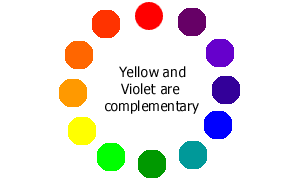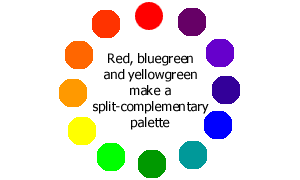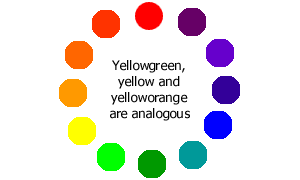Color strategies that work
Complementary colors: colors that are opposite on the color wheel. A complementary palette gives maximum contrast. Combinations of a primary with a secondary are simple and direct; combinations of intermediates have greater refinement and subtlety.

|
|
| #FFFF00 | |
| #6600CC | |
Split-complementary colors: A key color combined with the two hues that lie next to its exact opposite. Gives more refined color expression than with the complementary color alone.

|
|
| #FF0000 | |
| #00FF00 | |
| #009999 | |
Analogous colors: Colors that are adjacent to each other on the color wheel. Analogous palettes tend to have an emotional quality since they favor either the warm or cool side of the palette.

|
|
| #00FF00 | |
| #FFFF00 | |
| #FF9900 | |
Triadic colors: Colors that form an equilateral triangle within the color wheel. The mother of all triadic schemes consists of the primary colors - red, yellow and blue.

|
|
| #009999 | |
| #FF9900 | |
|
|
|
Monochromatic (one color): Using tints, tones and shades of a single hue, along with basic neutrals (black, white and gray), can create a striking mood with still enough contrast to create interest.
|
|
|
|
|
Harlen Makemson © 1999 All Rights Reserved. Designed for the students of JOMC 50 Electronic Information Sources in the School of Journalism and Mass Communication at The University of North Carolina at Chapel Hill. All copyrighted material used in this site is intended as fair use for educational purposes only.